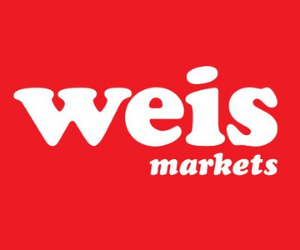Dr. Frank Lance of Parks & People tells Nestor about the local group and many organizations supporting the creation of a proper Black Sox Memorial and a Negro League Baseball history trail planned for the Baltimore waterfront.
SUMMARY KEYWORDS
baltimore, negro leagues, baseball, owings mills, years, history, play, live, parks, day, westport, museum, erect, baltimore city, great, project, talking, mccallum, oriole park, black
SPEAKERS
Nestor J. Aparicio, Dr. Frank Lance
Nestor J. Aparicio 00:01
Welcome home we are wn St. Am 5070 tastic Baltimore and Baltimore positive this is gonna be a fun one. We’re gonna be taking the crabcakes we’re back out on the road in April. I’ve got dates together. Big announcement, we’re going to be fadeless we’re going back to live radio just on Fridays when the Orioles are in home. It’s a fresh day for Oriel baseball, and I like talking about baseball. I like talking about the past of baseball and certainly the future baseball and I like projects bring cool things to my attention and always learn something and Allah McCallum has been trying to teach me about Negro Baseball leagues for all of these years. We’ve been friends for 30 years, and I was taken out to the Owings Mills station where there there’s a an entire wing that really speaks to the history of Negro Baseball in Baltimore. I’ve seen some fields and been around town, but this is gonna be a really interesting segment because there’s a Baltimore Black Sox memorial project I’ve been waiting to get to get Frank Lance on for a couple of weeks now. We’ve been trying to organize this he is the president and CEO of Parks and People you can go to parks and people.org. Learn more about this. We’re gonna learn about it right now and about this project. First things first, I know you’ve been busy out there. I’ve been waiting to get you on. I kept saying to Karen, the closer with longer we wait, the closer we get to baseball season. So the better this thing is gonna be your first off. How are you today? Welcome in.
Dr. Frank Lance 01:21
I’m doing well. Thank you for having me. Thank you so much for having interest in this project. Well,
Nestor J. Aparicio 01:26
before we get to your things, talking about my thing, because everybody needs to know about this thing and Owings Mills, that I’m only used to beat on me all the time saying, you take the train, even if you don’t take the train, take your car. Yeah, my wife has dropped me off and picked me off up at that station when we live downtown. That’s a beautiful thing. I mean, I’ve been to the real museum in Kansas City. It’s close. Then we got the one here in Baltimore. You can just walk up and see it anytime. See real Baltimore baseball history there for everybody.
01:50
Absolutely. So for anybody who has not seen it in Owings Mills and the Owings Mills branch of the library. There is the Herbert Simmons Memorial Museum for Negro League baseball. For those people who don’t know, Herbert Simmons was a Baltimorean. He played in the Negro Leagues, he owned a shop embroidery and screen printing shop in Baltimore. And post his death in museum was erected that’s currently housed in the Owings Mills Library. It’s fascinating is four floors, of artifacts of history of everything that you want to know about. Baltimore, Negro League baseball is in that museum. If you haven’t gone, please go,
Nestor J. Aparicio 02:29
Well, this brings a lot of my face, because cop and state’s involved in this and a lot of local people are involved in this, run me through first of all, what Parks and People is, and really what what you’re trying to do here through a legacy of baseball. And, you know, we’re all trying to live Baltimore, I mean, you know, every single day, we’re trying to tell stories, there’s plenty places telling the bad stories, play people like you trying to make good things happen.
02:51
And that’s, that’s the key. Everybody’s heard some negative stories, right. So David, David Simon writes about the wire and everybody heard negative stories about Baltimore. But Baltimore has so many positive jewels. And so my organization, Parks and People as a 40 year old nonprofit that has spent his 40 years lifting up Baltimore, and we do that by building parks, and playgrounds and green spaces all around Baltimore City. So a few years ago, 2018, to be exact. One of the projects that came toward us is would we be interested in helping to bring out of antiquity and into the minds of people today, the history of the Baltimore Black Sox, here in Baltimore. So for those people who don’t know, they played from 1913 through 1936, one of their headquarters sites was in Westport, that African American community known as the middle branch with Cherry Hill and Westport, Leadenhall, that’s where they played great names Satchel Paige, Josh Gibson, Joe Ganz, Joe Lewis, these were Baltimore Black Sox players, and they won a championship. And so Nestor, you and I were talking about a few moments ago. So we’ve talked about the Herman’s Hermits who was museum, you and I both have been out to Kansas City to the national Nikkor leagues museum. We want to erect something here in Baltimore. That’s a destination site where people can see an honor and remember, the Baltimore players, the people that lived breathed a Baltimore and gave homage to baseball here. Why,
Nestor J. Aparicio 04:21
I think in the history part of this, that Baltimore was a real key component in all of this, not just in the Civil War and being sort of a border place. But from the baseball perspective, going back to this era, where you know, babe, Ruth was running around in the big leagues and playing over in South Baltimore as well. And his dad, obviously, I got Camden Yards. His dad famously had the bar downtown and all of that, but everything over my shoulder out toward St. Agnes hospital was sort of where Babe Ruth was my understanding and I’ve been led to believe different stuff, but I, you know, in reading up on the history, I’ve been over where there’s a little brewery in the Peabody breweries where the Oriole Park was, tell me a little bit about my understanding. Have of Negro Baseball 100 years ago. Here we are other than just Westport. This was this was a very very ripe area for African Americans to play baseball. And it was a street game here at that point 100 years ago. Right?
05:15
And that’s I love that question because it shows your knowledge of history. Remember, when the great migrations took place when African Americans by millions moved from the South North, Baltimore was one of these destination cities. So you have places like Philadelphia and New York, Chicago, Baltimore, was one of those cities. So what does that mean? This rich history of intellect and physical ability came to Baltimore also. And with that in mind, this love of baseball came to Baltimore. And so what you have are people who are first generation post enslavement, first generation post failed reconstruction, Plessy versus Ferguson, and they have a love for their country, and a love for the sport of baseball. But segregation, separate but equal, did not allow them to play Major League Baseball. So they created a league of their own. And when you talk about sites, there were five different sites that history has shown us. So Dr. Bernard McKenna, who wrote the quintessential book on the Baltimore Black Sox, has been able to identify five different sites at which these teams play one in Westport, you mentioned Oriole Park, there are others around that C shaped that I mentioned earlier. And what we want to do here is snipped all of this up for Baltimore to say, there is some great history and and so if I may quickly, and it’s not just the men as ballplayers, but who were they holistically as individuals remember, having to live through Plessy versus Ferguson failed reconstruction, World War One having to live through these things, who were they holistically were they activist, were they business people were the intellectual, they have had a love for the sport, but they also loved their country. They love what they were doing. They also had no
Nestor J. Aparicio 06:56
opportunity, you know, till Jackie Robinson came along. And you know, if you look at the history of baseball, and the racism and the in our country that still exists to this day. But the baseball side of when Jackie Robinson happened, it was, as I understand it, clearly opportunistic, but it sort of it broke the Negro Leagues apart, right. Like, it ended the Negro Leagues, which were a really good thing for black business owners, and different ways, but certainly stage differently. And the goal was to be assimilated and and obviously going on and playing open the doors for the Hank Aaron’s and a Willie Mays, it didn’t come that long for laughter You know, those players wouldn’t have been allowed 15 years earlier, some of the great players that ever play the game, that this really is a lost that these museums and these libraries hold really lost history and and and lost facts of who Babe Ruth would have been competing dance to Lou Gehrig would have been competing against back in the day. And
07:58
Nestor I love this, you’re not gonna talk about this forever, because this is really the why about why we’re doing this project. It gives us the opportunity to bring these things to people’s mind today. So I want to touch upon what you said. I asked. So I like you went out to Kansas City to the National Indian Religious Museum, I went to DC, the Smithsonian Museum of African American History and Culture. And I naively asked the question, when did the Negro Leagues in and I was given two answers, if you want the formal ending, that was at the end of the 1960 1961 season. But what purists say is that the Negro Leagues ended the day Jackie Robinson, scientist contract with the Brooklyn Dodgers, the day that integration was possible in Major League Baseball, the creme de la creme left the Negro Leagues, went to Major League Baseball, which severely diluted the quality of the Negro Leagues, and it lived up to his demise and finally ended in 1960 1961. And so to your point, some would argue that people of color lost your integration, right, lost your assimilation, and one of the things that was lost was this great league known as the Negro Leagues. Well,
Nestor J. Aparicio 09:10
you know, my people came from Venezuela. And you know, my cousin played on the 66 Orioles and, but he came up in 56. I got the rookie card. And, uh, Frank Robinson came up that six and Frank Roberts playing Cincinnati and had darker skin look more like you than like me, and I look more like Louis, man, the guys coming from Cuba and for Venezuela. Similar situation just based on the pigments of their skin not allowed to play in the 40s allowed to play in the 50s. And, you know, I mean, it’s, it’s a sick tale of American history that I think a lot of people want to sort of subjugate and say it didn’t happen or not talk about it because it is sort of seedy and an unseemly part of this. But I love the folks like you are keeping this alive. And so you’re working on a project give me give me the project that what you’re working on right now and what it has to do with the Black Sox The Black Sox named and you’re trying to keep alive.
10:02
All right. So there is a project in which we’re working. There is a greater project of which this is a subset. There are a team of individuals, the Baltimore City Mayor’s Office Rec and Parks, Foxton, people and others. We’re working on redeveloping that entire 11 mile stretch known as the middle branch from Baltimore Peninsula all around all the way around to Masonville Cove. Within that there will be an African American Heritage Trail and the Baltimore Black Sox Memorial. Since these communities were black communities and the Baltimore Black Sox played there, we will erect a memorial. You mentioned earlier working with compensate students who are doing the history and the research along with the afro archives, we will have statues of players, we will have a mock feel we will have a dugout we will have a kiosk, a destination place where people can come push the button, learn about people look at the information, go on website and find out who were the Baltimore Black Sox to owners, the players, people who came to games, what the stadium look like, and this history can come alive again.
Nestor J. Aparicio 11:06
I gotta get a history professor Dr. Dupree Wilson off over Coppin State, find out about the history of my city and African American Heritage Trail. So we’re talking about Westport right by 295. If you have a trail there along the water, and I’ve seen this, they have one in Wilmington, they have one in Omaha, Nebraska over a bridge, those kinds of walking areas and that marshy area down there, it was sort of left for dead because of all it’s sort of where the water sort of stops inside of the harbor. But my wife and I live downtown, we would see people rowing from Cherry Hill, they have a rowing community over there. But that would be just such a beautiful walking trail along the backside of their timeframe on that cost on that and goals to get from here to there. So I go walk on this thing before I turned 65. Great,
11:56
great questions. And so that is the point we are looking to redevelop that area by putting in those kinds of amenities there that other communities already have, as you said, a walking trail. There’s the Baltimore Rowing Club. Hopefully, if we can raise the kind of funding necessary and activities like this are raising their awareness to help us raise the funding, we will be erecting the first statute in the 2026 timeframe. And we don’t want this to be a one time event. We want to be erecting statues annually to keep the attention and to keep the interest going in this work. So we’ll be doing this annual link. And as it relates to funding. Right now we’re in the earliest stages. So we’re looking at the site we’re doing community engagement, we are looking at the marketing plan that’s about 200,000. But the actual work itself will be anywhere from 15 to 20 million.
Nestor J. Aparicio 12:45
Thank Lance’s our guest he is the president and CEO of Parks and People you can find them at parks and people.org. Talking about their latest project, Parks and People a legacy environmental nonprofit in Baltimore City that administers equity based reparations work in Baltimore is black communities by providing quality out of school time programming, and building state of the art parks as a way to spark community redevelopment. Yes, I am reading from that. How can people help? How can they get involved and participate in this with you?
13:14
So the way in which people can get involved please go to our website. And so you’ve already mentioned WWW dot parks and people.org we want your input. We want to know what you know whether or not you’re connected any form of players if you have any artifacts, what you would like to see we don’t want to prescribe what this looks like we want this to be a community gathering place. So we have
Nestor J. Aparicio 13:37
a Judy Johnson autograph I’m going to donate to you. How about that sounds good.
13:40
Thank you.
Nestor J. Aparicio 13:41
He signed my Frederick keys scorecard one time 35 years ago I was out in Frederick so there that’s what Leon day my it might have been a Negro Baseball thing that night. I might it might have been few guys were alive back then leon de was alive. And we were always honoring him back in the early 90s. Right.
14:00
And he will be one of the statutes that we’re going to put up. See that I’ve learned
Nestor J. Aparicio 14:04
stuff. So you come back you let me know what’s going on. We got to get the professor on talk about this. And it’s a baseball project. Why would I want to know about or be involved in it? So I’ll meet you up in Owings Mills for sandwich Sunday dr. Lance. All right, good. Doc Frank lands our guests find them at a parks and people.org Learn more about the Baltimore black socks and black socks history. And anytime, anywhere you find Alan McCallum he’ll sit you down in school. Yup. The way he’s been schooling me up for 30 years. So So Dr. Lance Allen’s been preparing me 30 years for this interview so I didn’t sound stupid so I sound smart because Alan’s may be smart. So I appreciate you five added Parks and People that are you find me the Maryland crabcake tour taking land on the road. In April Luke’s gonna be at the ballpark. We’re gonna be at fadeless on Fridays live from two of the five. It is all brought to you by the Maryland lottery in conjunction with the Friends of winter nation. I got my winter nation shirt on here. The doors are the key part of this show. I’m doing I did windows. That was so two years ago for me but you could still do Windows 866 90 nation as well. was our friends at Jiffy Lube and liberty pure solutions keeping my water pure we are WNS TA and 1570 TAs and Baltimore we never stop talking Baltimore positive and that was pretty positive one right there


























